Clean Grip: Proper Width and Common Mistakes
Author:
Unlock your full potential by engaging with our experts and community! Have questions about your fitness journey or looking for expert advice on weightlifting techniques? Don’t hesitate — leave a comment below and Oleksiy Torokhtiy will provide a personalized answer and insights to help you reach your goals.
Torokhtiy is reader-supported. Some links are affiliate links, and we may earn a commission at no extra cost to you. See our disclosure page for details.
The clean grip is one of the basic techniques in Olympic weightlifting and it plays a big part when it comes to form, safety, and performance. And while some people might mistake this for just where your hands are on the bar, there’s more to it.
The point is creating a strong connection between your body and the weight, so that you can get the power you need for explosive movements. But we don’t expect you to just blindly believe what we say, so grab a bar and get ready to learn why the clean grip is such a big deal!
What is the clean grip? – It’s a hand placement used in Olympic lifting, especially in the clean and jerk. You grip a bar slightly wider than shoulder-width, with the palms facing down. This type of grip allows you to have better control, and more stability and power during the lift.
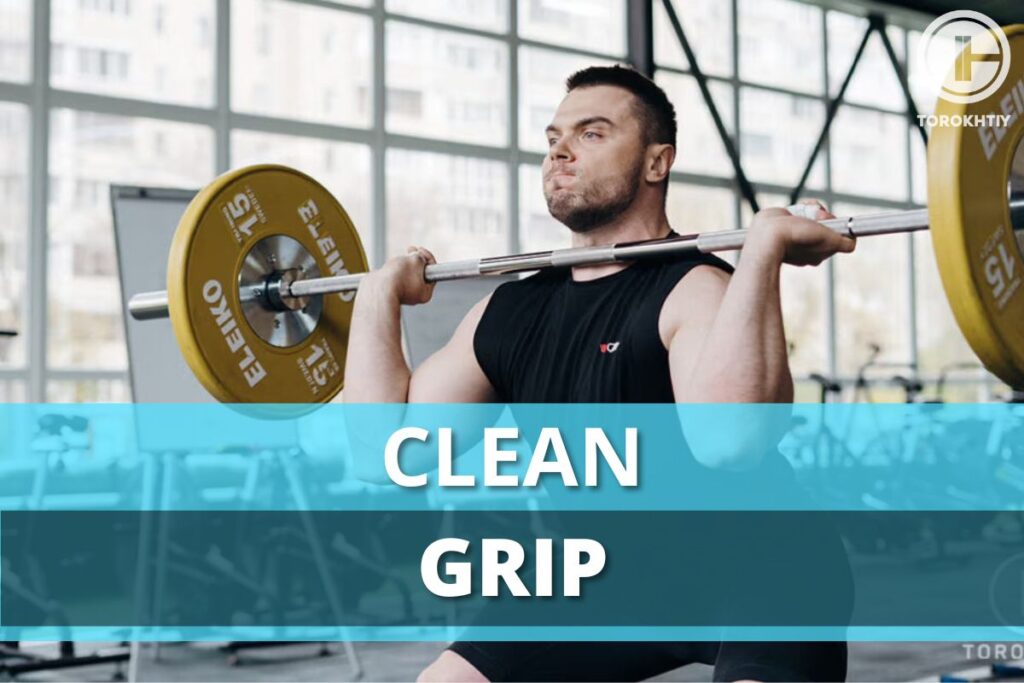
Clean Grip – Why It’s So Crucial for Clean?
Having a strong grip is important, of course. But, it’s also extremely important to know how to place your hands in order to get the most out of it (and this part sometimes gets overlooked). When you do it the right way, a good power clean hand position will give you stability, control, and power, and because of that, you’ll be able to lift heavier weights in a safer, more efficient way.
Basically, if you’re serious about Olympic lifting, you need to understand the clean grip completely.
Hook Grip vs Overhand Grip
One of the first things you’ll need to decide on when you’re setting up for a clean is whether you’ll use a hook grip or an overhand grip.
The hook grip (where you wrap your thumb under your fingers) is usually something you’ll see experienced lifters use because it gives a more secure hold on the bar, especially under those super heavy weights and it’s considered the norm, especially for the power clean.
This grip will make the bar less likely to slip out of your hands during the explosive phase of the clean, which is important for control, and if you’re doing a power clean, a hook grip will improve the timing of the turnover and catch.
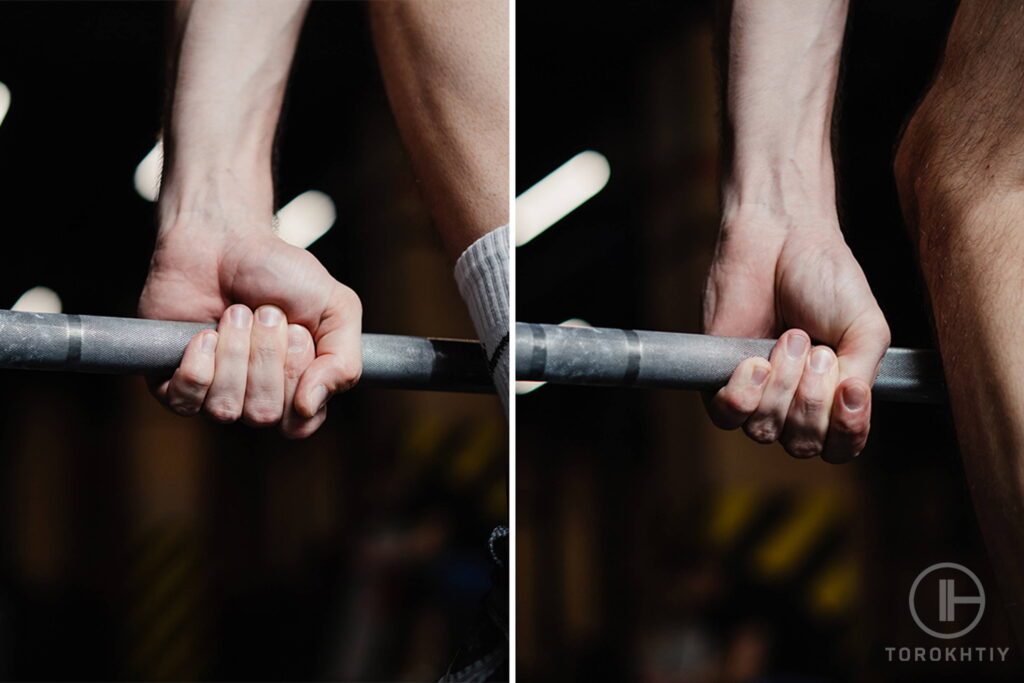
The overhand grip, however, is more straightforward and you simply wrap your fingers over the bar with the thumbs on top. It’s easier to set up and it’s more comfortable for beginners, but you don’t get the same amount of security as you do with the hook grip, especially when you’re working with heavy weights.
If you want to progress, you’ll need to go from the overhand grip to hook grip early on because it can make all the difference when it comes to performance and safety.
Hook grip can help you eliminate a lot of beginner mistakes like incorrect elbow position, slow turnover and even early arm bend. It can be a bit painful in the beginning (to your thumb) but it takes about 2 weeks to adapt to it and it will be much better. You can also use tapes to wrap your thumb which you can see very often with elite lifters.
Follow us!

Free!
Get a 2-week Weightlifting Program as a bonus for the subscription to kickstart your training plan!

Free!
Clean Grip Width – What Will It Determine?
The clean grip width affects your performance. Generally, the clean grip is a little wider than shoulder-width apart, but there’s no set width because it varies based on a person’s body proportions and what they feel is comfortable. A proper clean grip width affects a lot of aspects of the lift, including your bar path, how much power you’re able to generate, and balance.
If your power clean grip width is too narrow, you won’t be able to generate enough power from your legs and hips, so the lift won’t be as effective as it should be. It can also throw the bar path off and make it swing too far from your body, which is another thing that will make the lift less effective. It will also increase the risk of injury.
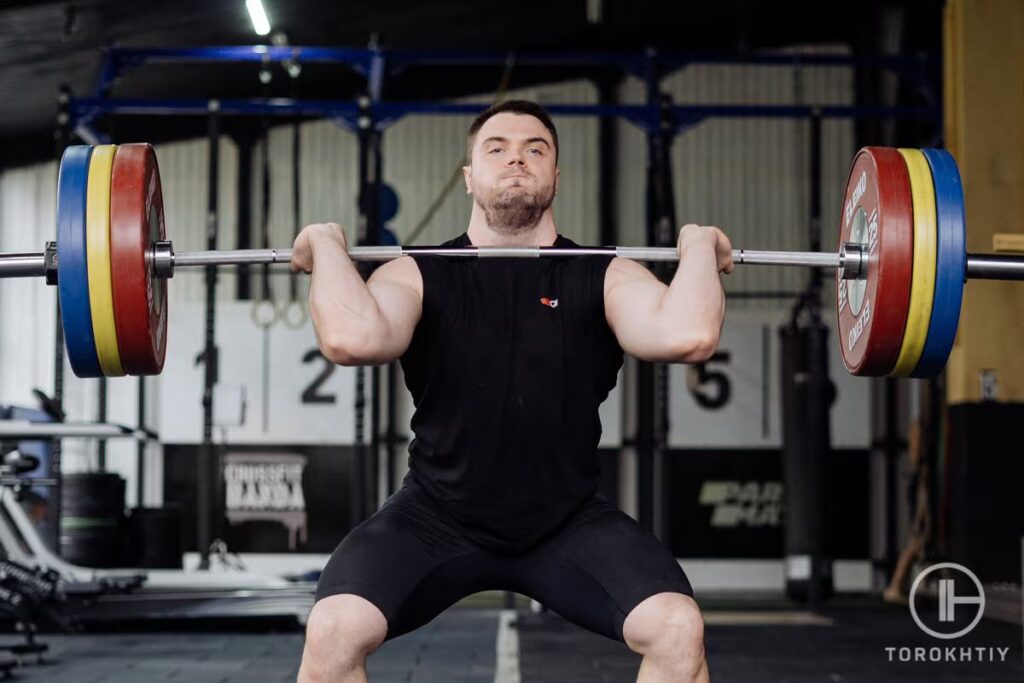
On the other hand, a grip that’s too wide will make starting position more difficult and affect your point of contact and even how much you can pull from the ground.
1. Point of Contact
This is where the bar makes contact with your body during the clean. This happens around the upper thighs or hips, depending on the width of your grip. The point of contact is super important because it’s your power position – where you’ll generate the explosive power you need to propel the bar up.
A grip that’s too narrow will make the point of contact too low on your thighs, which will result in a weaker lift and an inefficient bar path. A wider grip will shift the point of contact higher, but starting position and first pull might be harder.
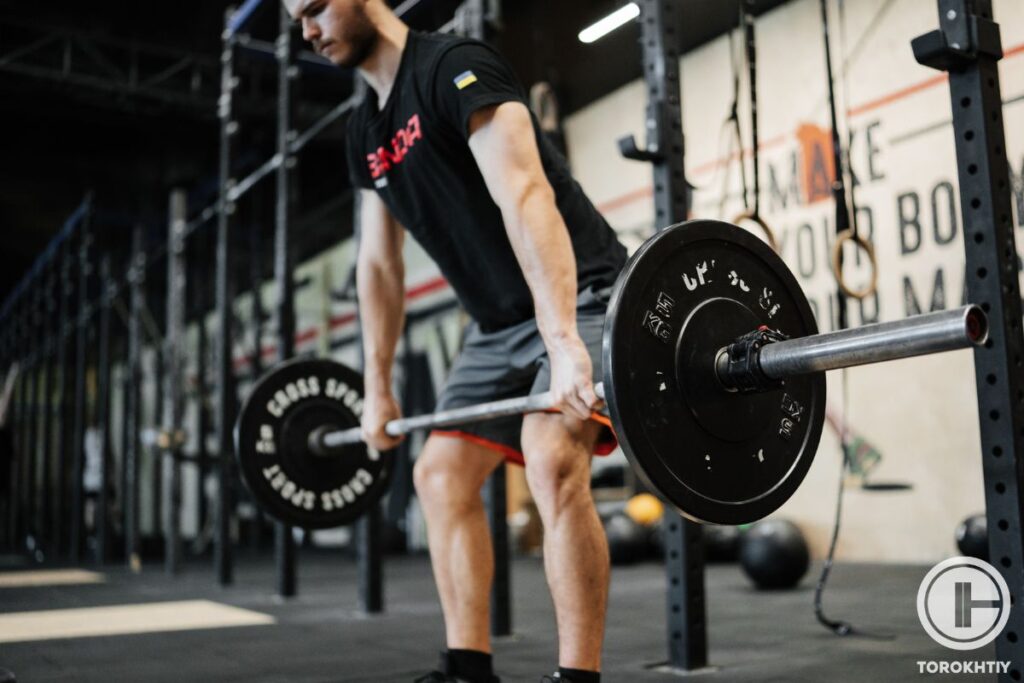
You want a clean grip that will allow the bar to hit at a point where you can get maximum power transfer from your legs and hips to the bar but also one that will be most efficient in a first pull.
2. Front Rack Position
This is where you catch the bar after the explosive pull in the clean. Your clean grip directly influences how comfortable and stable this position feels. Ideally, when you catch the bar, your elbows should be high, and the bar should rest securely on your shoulders.
If your grip is too wide, it will be hard to get this position, so you’ll be uncomfortable and you’ll get an unstable rack. The instability might make you lose control of the bar.
A grip that’s too narrow could force your elbows down and won’t allow the bar to properly rest on your shoulders.
Save it for easy access!
Bookmark this page now to access the program and instructional videos anytime, anywhere.
Stop wasting time searching during your gym sessions.
How to Setup Clean Grip?
Place your hands on the bar a bit wider than shoulder-width apart. I personally like to set up new athlete grip width with a thumb-length away from their thighs when they stand up with arms on a side. You should feel a natural tension in your upper back as you grip the bar.
If you’re using a hook grip, wrap your thumb around the bar and then cover it with your middle and then index finger. If you’re using an overhand grip, just wrap your fingers over the bar with your thumbs on top.
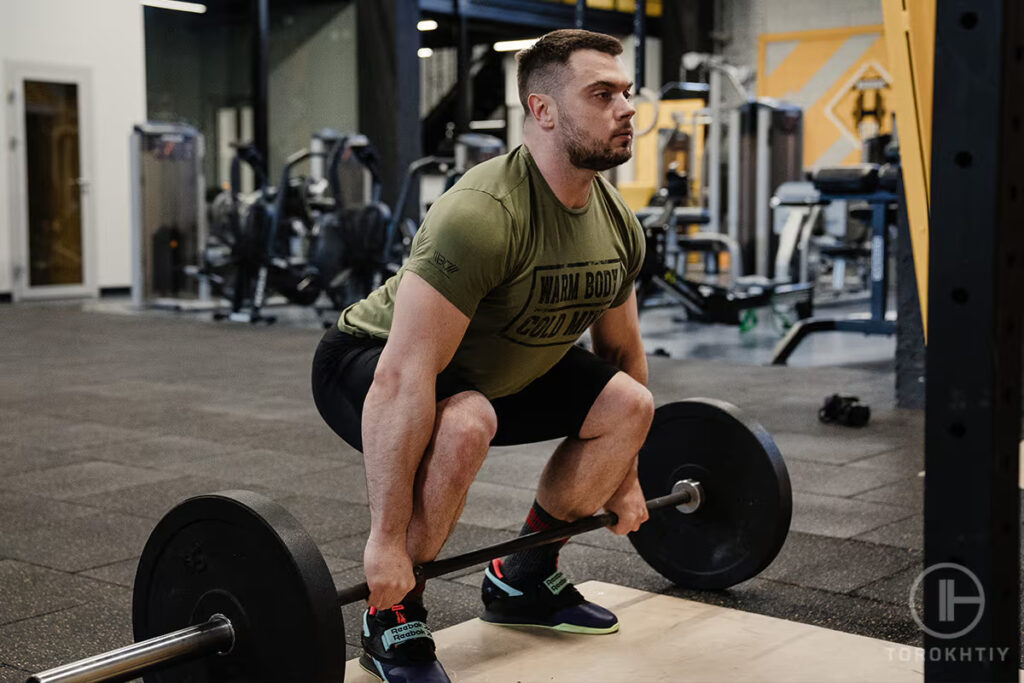
Your grip needs to be symmetrical on both sides of the bar and your wrists need to be in a neutral position. Once your grip is set, focus on keeping your arms relaxed and using your legs and hips to generate the power for the lift.
The power clean grip setup will probably feel a bit awkward at first, but keep practicing and you’ll see, it’ll become second nature.
Clean Grip Mistakes & How to Avoid Them
Even with the best intentions, mistakes happen to everyone and they can really hurt your performance and safety.
One of the most common mistakes, especially with newbies, is gripping the bar too tightly. You want a secure hold, sure, but a grip that’s too tense will make your arms stiff and the lift won’t be as fluid. The ideal grip is firm, but arms are relaxed.
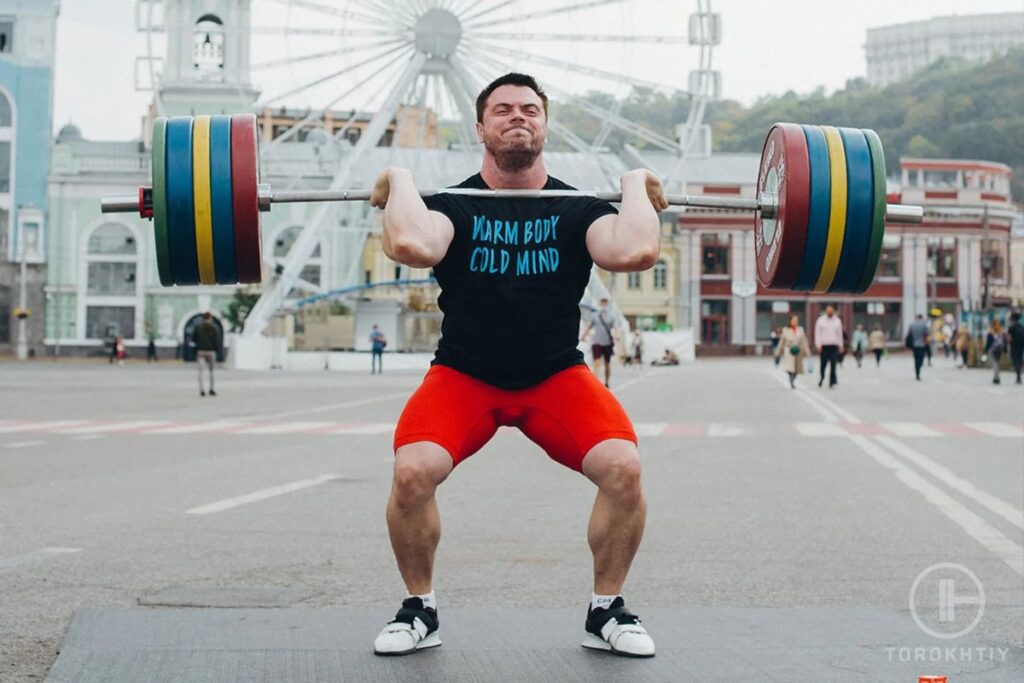
Another super common issue is a grip that’s too narrow or too wide. This will affect your bar path, point of contact, and front rack position – which we’ve discussed in detail already. The best way to avoid this is to check your grip width from time to time and make adjustments according to your performance and what you feel is comfortable.
Conclusion
If you can get your clean grip right, it will make a world of difference in your clean and jerk. Where your hands go on the bar sets you up for success, or, well… fail.
Pay attention to your grip type, width, and tweak it if you need to to make it more comfortable. When you nail this, your lifts will be a whole lot smoother, even those super heavy ones.
What about you? Have you tried switching up your grip to see how it affects your lift? Do you stick with the hook grip power clean, or do you like something else better?
Drop a comment and let’s see what you have to say!
References:
- Dustin J. Oranchuk, Eric T. Harbour, Riki S. Lindsay, Adam G. Storey, and Eric J. Drinkwater, “Improved Power Clean Performance with the Hook-Grip is Not Due to Altered Force-Time or Horizontal Bar-Path Characteristics,” Journal of Sports Sciences 40, no. 2 (2022): 226-235.
- Dustin J. Oranchuk, Eric J. Drinkwater, Riki S. Lindsay, Eric R. Helms, Eric T. Harbour, and Adam G. Storey, “Improvement of Kinetic, Kinematic, and Qualitative Performance Variables of the Power Clean With the Hook Grip,” International Journal of Sports Physiology and Performance 14, no. 3 (2019): 378-384.
- Kinetic Select, “Power Clean,” National Strength and Conditioning Association, https://www.nsca.com/education/articles/kinetic-select/power-clean/ (accessed August 14th, 2024)
- Raju Vaishya, Anoop Misra, Abhishek Vaish, Nicola Ursino, and Riccardo D’Ambrosi, “Hand Grip Strength as a Proposed New Vital Sign of Health: A Narrative Review of Evidences,” Journal of Health, Population and Nutrition 43, Article 7 (2024).
- Thomas Huyghe, Brent Goriss, Ernest DeLosAngeles, and Stephen P. Bird, “Exploring the Power Clean,” International Journal of Strength and Conditioning 1, no. 1 (2021).
- Photos by Torokhtiy Media Team.
Why Trust Us?
With over 20 years in Olympic weightlifting, strength training, nutrition coaching, and general fitness our team does its best to provide the audience with ultimate support and meet the needs and requirements of advanced athletes and professional lifters, as well as people who strive to open new opportunities and develop their physical capabilities with us.
By trusting the recommendations of our certified experts in coaching, nutrition, and sports training programming, as well as scientific consultants, and physiotherapists, we provide you with thorough, well-considered, and scientifically proven content. All the information given in the articles concerning workout programming, separate exercises, and athletic performance, in general, is based on verified data.
The product testing process is described in more detail here.
Author: Oleksiy Torokhtiy
Olympic Weightlifting Champion
Best Results: Snatch – 200 kg,
C&J – 240 kg
Oleksiy Torokhtiy is a professional athlete boasting 20 years of experience in Olympic weightlifting. With multiple European and World titles under his belt, he has showcased his prowess in two Olympic Games (Beijing 2008 and London 2012). Upon concluding his illustrious career, Oleksiy dedicated himself to coaching. By 2022, he had conducted over 200 weightlifting seminars worldwide. He is the visionary behind an international sportswear and accessories brand known for its motto, “Warm Body Cold Mind.” Additionally, he is an esteemed author and the creator of a series of training programs and eBooks.



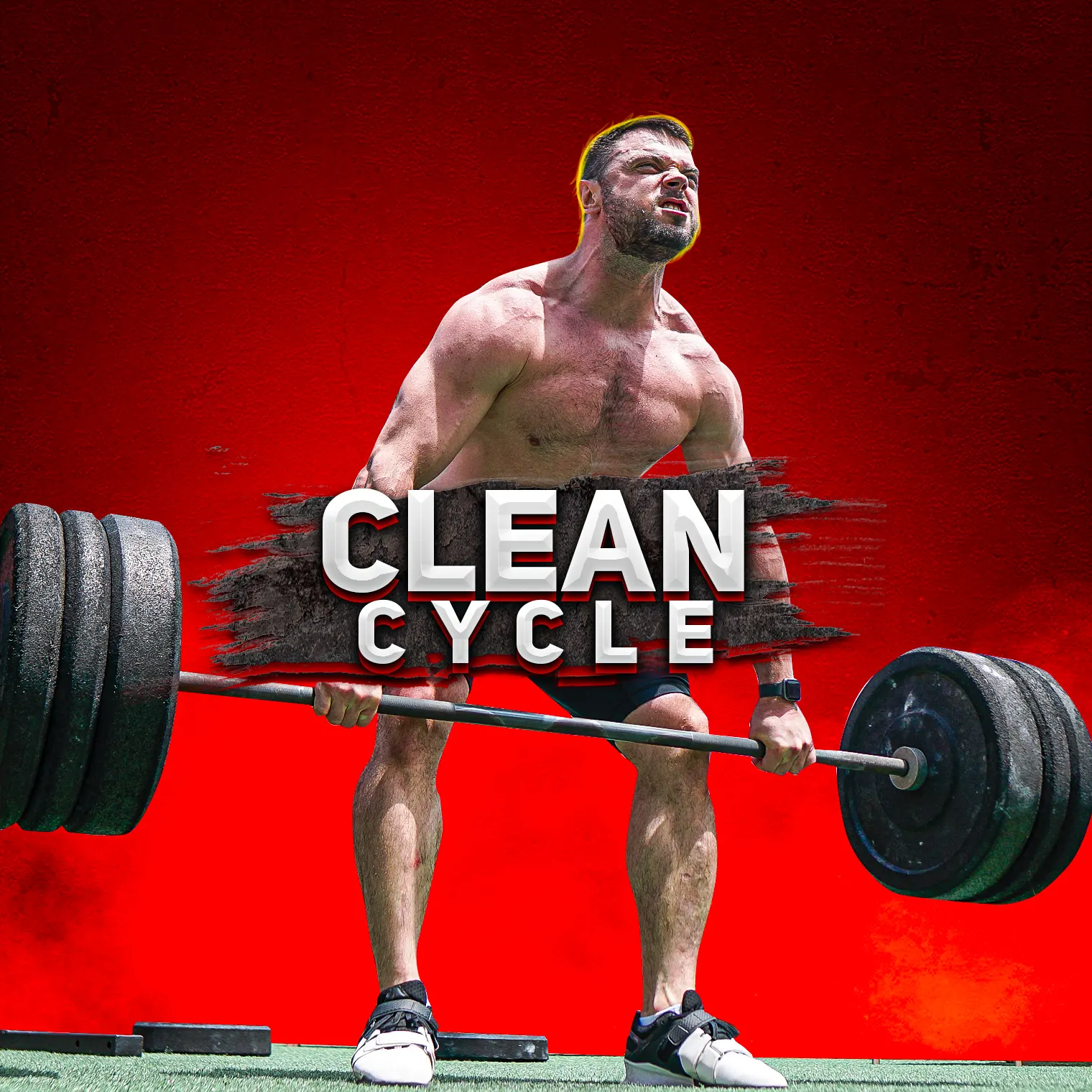
Still have questions after reading our article? Unlock your full potential by engaging with our experts and community! Don’t hesitate — leave a comment below and Oleksiy Torokhtiy will provide a personalized answer and insights to help you reach your goals.